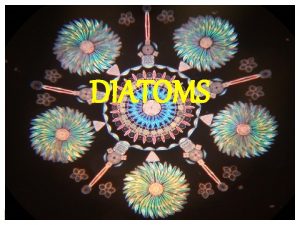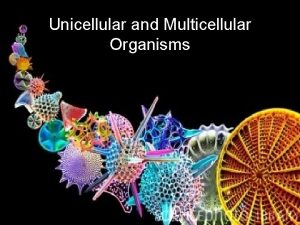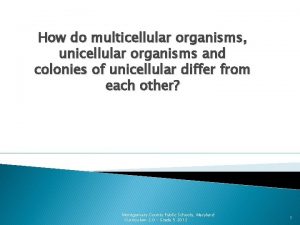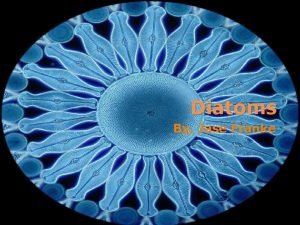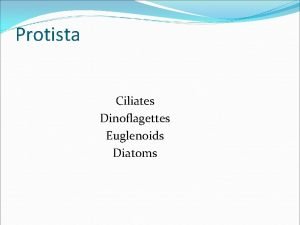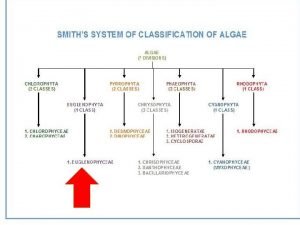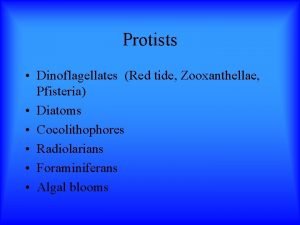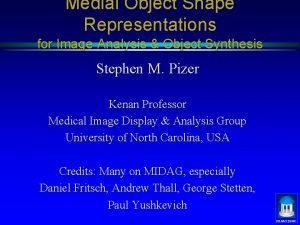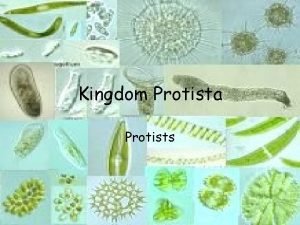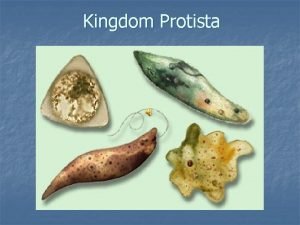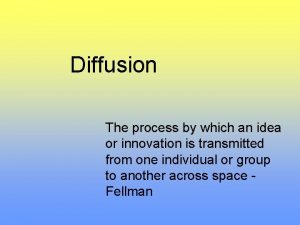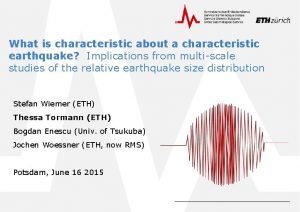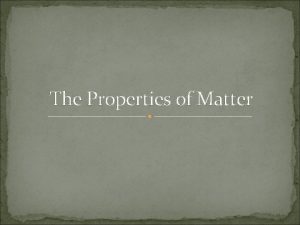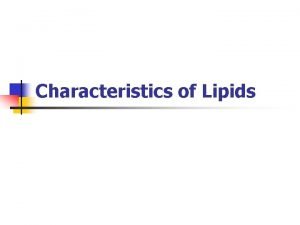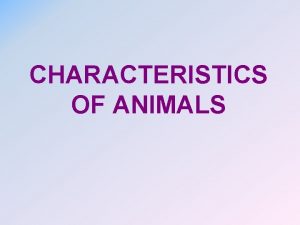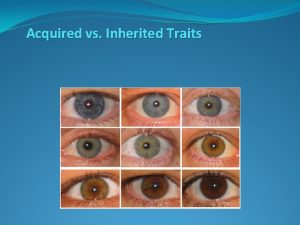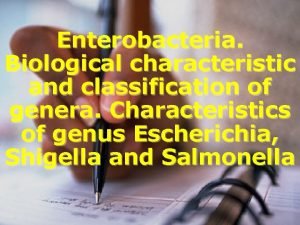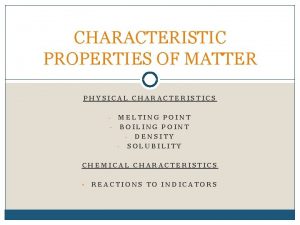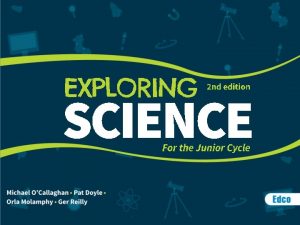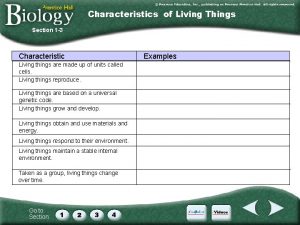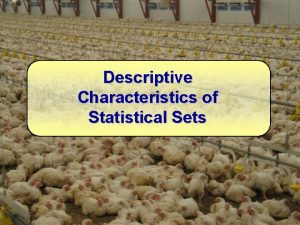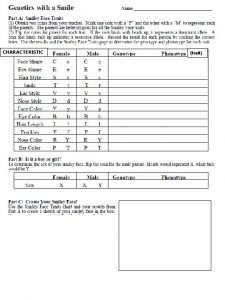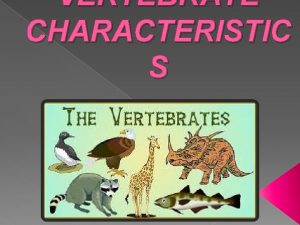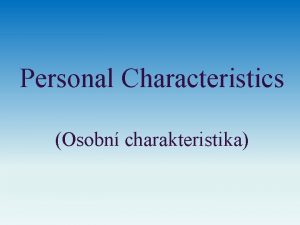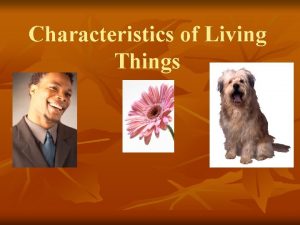DIATOMS CHARACTERISTICS INTRODUCING ME Characteristic 1 Diatoms are



































- Slides: 35

DIATOMS

CHARACTERISTICS INTRODUCING ME…

Characteristic # 1 Diatoms are… the most abundant species in AQUATIC/ moist ecosystems http: //www. jm-derochette. be/images/Diatoms_1. jpg

Characteristic # 2 Azpeitia tabularis Diatoms are… Important: • Fucoxanthin Photosynthetic autotrophs http: //www. sciencephoto. com/media/16036/enlarge, http: //berryeasy. com/wp-content/uploads/2011/06/Photoautotrophs. jpg

Characteristic # 3 Diatoms are… Psammodictyon panduriforme UNICELLULAR PROTISTS/ alga/ phytoplankton http: //1. bp. blogspot. com/_C 97 Nr. Ibl. NPQ/TTk. Pj 0 DIg. ZI/AAAAB 38/QYLupy. Ethaw/s 640/Diatom 007. jpg, http: //www. cartage. org. lb/en/themes/sciences/botanicalsciences/majordivisions/kingdomprotista/Protists/98258 d. jpg

Characteristic # 4 Diatoms are… Triceratium sp. Biddulphia tridens The most beautiful creatures on earth http: //www. sciencephoto. com/image/15909/350 wm/B 3050211 -Diatom_alga, _SEM-SPL. jpg, http: //cdn. indulgy. com/78/b 3/Q 8/210684088788027965687 Ks. APSc. jpg

STRUCTURAL CHARACTERISTICS THAT’S WHAT MAKES THEM BEAUTIFUL!

Structural Characteristic # 1 Diatoms have… Epitheca Hypotheca Stichodiscus sp. Functions: • Filtration/ Disinfection • Industry (eg. toothpastes, soap) • Gives them shape (boatlike, rod-like, disk-like, triangle-like) • Gives them color Glass-like Cell walls(Frustule)with silica (si. O 2) http: //www. sciencephoto. com/image/15918/530 wm/B 3050220 Diatom_alga, _SEM-SPL. jpg

Structural Characteristic # 1 http: //www. ucl. ac. uk/Geol. Sci/micropal/images/diat/diadiag 01. gif

Structural Characteristic # 2 Diatoms have… Functions: • Photosynthesis • Primary Food Source • Vitamin D Source Chlorophyll-like plastids inside their cells http: //www. chm. bris. ac. uk/motm/chlorophyll/chphyll. gif

Structural Characteristic # 3 Diatoms have… Functions: • Oil production • Floating • Oil Deposits under the ocean fuel • Storage of chemical energy from photosynthesis • Nitrogen production Oil drops made of sugar & starch and volutin inside their cells

Structural Characteristic # 4 Diatoms have… Functions: • Oxygen and Nitrogen Distribution • Exchange of materials Pores with patterns on their frustules http: //1. bp. blogspot. com/_C 97 Nr. Ibl. NPQ/TTkb. PZID 0 n. I/AAAAB 4 s/cyjz 8 FLy. F_g/s 640/ rad_diatoms. jpg

Structural Characteristic # 4 Diatoms have… Effects: • Immobility Aulacodiscus oregonus NO cilia and flagella http: //www. sciencephoto. com/image/15915/530 wm/B 3050217 -Diatom_alga, _SEM -SPL. jpg

Structural Characteristic # 5 Diatoms have… Nitzschia reinholdii Actinocylcus sp. Types: • Centric • Pennate Different sizes and shapes http: //2. bp. blogspot. com/_C 97 Nr. Ibl. NPQ/TTki. NLuvr. EI/AAAAB 5 c/9 Kw. K-v. Mr. G 8/s 400/Diatom-2. jpg, http: //www. sciencephoto. com/image/15921/530 wm/B 3050223 -

HABITAT SOMEWHERE ONLY THEY KNOW

Habitats Diatoms live in… Marine Freshwater Moist/Watery Areas http: //www. allabouthappylife. com/wallpaper/widescreen_wallpapers/blue_water/blue_ocean -dsc 05506. jpg, https: //cmsdata. iucn. org/img/freshwater_6352. jpg

Habitats Diatoms live in… NO cilia and flagella http: //www. scienceclarified. com/images/uesc_04_img 0211. jpg

Habitats http: //cornellbiochem. wikispaces. com/file/view/Picture_1. png/139679067/301 x 313/ Picture_1. png

NUTRITION

Nutrition Diatoms are… PHOTOSYNTHETIC http: //www. youtube. com/watch? v=__x. Eh 1 Frh. LM, http: //mrhartansscienceclass. pbworks. com/f/1328587105/10 -20 -Photosynthesis. Rev-L. gif

REPRODUCTION I JUST HAD… (BLEEP)!

Asexual Reproduction The shrinking phase 1. Cell division takes place. 2. The two valves (epitheca and hypotheca) separate. 3. Each valve forms an epivalve of the daughter cell while hypovalves are secreted from the parent cells. 4. This results to one cell being the same size as the parent cell while the other is smaller. 5. This process continues until cells reach about 30%-40% of their original size.

Asexual Reproduction http: //www. mbari. org/staff/conn/botany/phytoplankton/images/diatom_asexual. j pg

Sexual Reproduction The growth phase 1. Meiotic Cell division • Formation of eggs and monoflagellated sperms in the parent cell 2. Fertilization • Union of egg and sperm produces auxospore 3. Auxospore/Zygote Formation (Growth Phase) • Splitting of the parent cell while continuing to grow 4. Test Secretion • End of growth phase; new parent cell develops

Sexual Reproduction http: //rbgweb 2. rbge. org. uk/algae/auxospores/auxospore_files/cycle_reproduction. jpg

Reproductive Cycle http: //upload. wikimedia. org/wikipedia/commons/thumb/8/8 a/Centric_diatom_life -cycle. jpg/580 px-Centric_diatom_life-cycle. jpg

Resting Spores The inactivity phase Skeletonema marinoi When: Times of low nutrients and low sunlight What: Metabolically inactive spores How: Stored energy from photosynthetic products & thick and tough cell walls Where: At the bottom of the ocean http: //images. sciencedaily. com/2011/03/110301111658 -large. jpg

ECOLOGY I WAS BORN THIS WAY!

Ecological Role # 1 Primary producers http: //oceansjsu. com/images/exped_ecoystems/arctic_marine_food_web_90. jpg

Ecological Role # 2 Important resource • • • 20%-25% of the world’s carbon fixation 40% of the world’s oxygen (in the atmosphere) Vitamin D 23% of primary productivity in the world Oil/Fuel Silicon (Si. O 2)

Ecological Role # 3 Nutrient detector PLANKTON BLOOM – when there is an abundance of nutrients and excessive amount of sunlight in the ocean http: //oceansjsu. com/images/exer 8/plankt 1. gif

EXAMPLES I’M NEVER CHANGING WHO I AM!

Triceratium moreirae Where: (mentioned) Southern Brazil Who: L. F. Fernandes and R. M. Sousa-Nosimann When: 2001 What: 47 -61 μm; convex, tripolar valves; elevated with ocellus and rimoportula http: //www. scielo. br/img/fbpe/rbbio/v 61 n 1/a 20 fig 6 b. gif

Example # 2 Lithodesmium undulatum Where: warm, temperate seas Who: C. G. Ehrenberg When: 1839 What: 37 -93 μm; marginal ridge with clear pattern of perforation; undulated sides; ‘wavy’ http: //www. sciencephoto. com/image/15919/530 wm/B 3050221 -Diatom_alga, _SEM -SPL. jpg

Example # 3 Baceteriastrum delicatulum Where: (mentioned) Mexico, Lebanon, UK, Red Sea Who: Cleve When: 1897 What: 20 -40 μm; circular valves with bristles; ‘spider-like’ http: //www. sciencephoto. com/image/15931/large/B 3050233 -Diatom_alga, _SEMSPL. jpg
 Mikael ferm
Mikael ferm What are the characteristics of diatoms
What are the characteristics of diatoms Is algae unicellular or multicellular
Is algae unicellular or multicellular Protists stationary or mobile
Protists stationary or mobile Nucleariids examples
Nucleariids examples Unicellular vs multicellular vs colonial
Unicellular vs multicellular vs colonial Diatoms domain and kingdom
Diatoms domain and kingdom Phylum
Phylum Chrysophyta characteristics
Chrysophyta characteristics Red tide protist
Red tide protist Midag
Midag Protists
Protists Diatoms kingdom
Diatoms kingdom Signal phrase
Signal phrase Introduction to english linguistics exercises answers
Introduction to english linguistics exercises answers Introducing james joyce
Introducing james joyce Quote sentence starters
Quote sentence starters What is a counterclaim in an argumentative essay
What is a counterclaim in an argumentative essay Unit 1 about myself
Unit 1 about myself Warm up introducing yourself
Warm up introducing yourself Introducing family members in french
Introducing family members in french Ottava rima poem examples
Ottava rima poem examples Introducing
Introducing Kfc overview
Kfc overview Integers essential questions
Integers essential questions Introducing internet
Introducing internet Quote citation
Quote citation Introducing new market offerings ppt
Introducing new market offerings ppt Templates for introducing quotations
Templates for introducing quotations Define upgrade advisor
Define upgrade advisor Who invented the metric system
Who invented the metric system How to write a short biography on yourself
How to write a short biography on yourself Whats cultural hearth
Whats cultural hearth Relation of blood
Relation of blood Introducing the odyssey
Introducing the odyssey Letter to an exchange student
Letter to an exchange student

